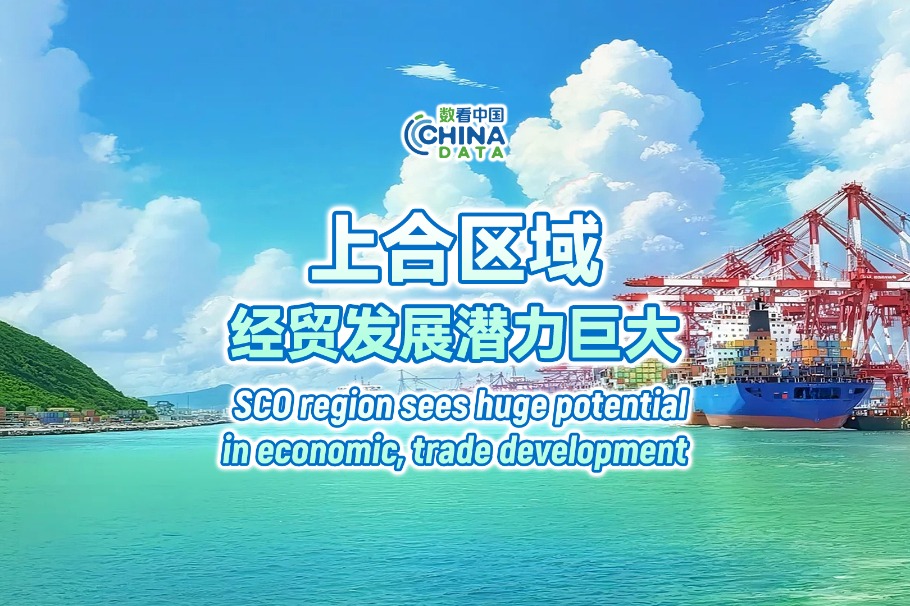Factors key to energy security, green push


At present, commodity prices, including oil price, are rising, but the reason for this latest round of oil price rises is not inflation but mainly supply chain issues. Oil and other commodities saw rapid price hikes as the economy began recovering from the COVID-19 pandemic. Before that, prices were quite moderate.
Usually, demand for commodities will pick up quickly after an economic recovery gets underway, but supplies can't keep up with demand because supply chains have been disrupted, including a lack of available ships and stevedores. After the recovery of supply chains, which takes some time, prices of commodities will decrease moderately. Oil is one of the world's most in-demand commodities. If oil prices remain at a high level, prices of other commodities are unlikely to fall. The Russia-Ukraine conflict will also impact the global oil market and even have a greater and longer-term influence on the global supply chain than COVID-19.
During this period, assuming that the attitude of the European Union and the United States toward Russia sees no significant change, and there are no other factors that could lead to a change, there is a high probability we'll see a decoupling. If such a scenario actually unfolds, energy prices may remain high for a long period, perhaps two to four years, during which time market entities may seek new partners and build new infrastructure necessary to meet energy needs.
If there's market decoupling, the US is likely to be a big winner. Since early 2021, the US development of shale oil has been suppressed. However, current high oil prices may offer an opportunity for US shale oil to develop, as it can be a substitute for crude oil. The high price of US oil has both positive and negative influences on the country's development of shale oil and there's no specific research to support either side. However, it is certain that the US will have a stronger say in the global energy market.
Development of new energy will accelerate and China should promote a corresponding energy transition.
Development of new energy will step up worldwide as it is low-carbon and can ensure energy security. Wind and solar power, two major types of new energy, are also emerging as solutions to achieve carbon neutrality for many countries. China also needs to accelerate new energy development and work to lead global technological innovation in the sector.
China's State-owned enterprises will shoulder most of the responsibilities of the country's low-carbon transition. At present, SOEs are meeting over 80 percent of China's fossil fuel demand. The transition of SOEs to a new energy-based business model is also key to China's transition to a greener economy. With energy prices at a relatively low level in China, it is challenging for energy SOEs to make such investments and transit to a greener development pattern, while guaranteeing energy security at the same.
But assuming that this round of relatively high energy prices can be maintained for three or four years, it could be an ideal time for SOEs to transition to greener development. For example, China National Petroleum Corp is likely to earn about $160 billion this year. If it takes $100 billion for green transition, its impact will be significant. Currently, China's new energy companies are having a hard time making profits, and mainly access funds from capital markets. If SOEs in the fossil fuel sector invest their profits gained from the last few years' businesses in developing new energy, China's green transition will be quicker and its global competitiveness will be higher. SOEs in the traditional energy sector will also enjoy better support from capital markets.
Energy is of vital importance to a nation's development, and it is better to have SOEs play a leading role in the undertaking. From this perspective, SOEs' green transition is inevitable. CNPC needs a large business volume to remain on the Fortune 500 list. Although its current business size is big enough to keep it on the list, it is hard to say if this will continue to be the case after a few years when the country's annual oil consumption plunges from 800 million metric tons to 70 million tons. So, from SOEs' own development perspective, they need to transition to new energy-based business models. With more companies around the world engaged in the traditional energy sector having already begun their green transition, China's new energy market will see fiercer competition.
The topic of China's energy security should be discussed through the lens of both long-term and short-term perspectives.
To ensure energy security does not simply involve increasing oil reserves and pouring investment into upstream industries, and discussion of energy security should take on a whole new meaning under China's transition to a low-carbon society.
China will not have energy security problems if we take a more macro point of view. There's enough production capacity for China's coal industry. The shortage of coal-fired power in 2021 was mainly due to coal price volatility.
China's energy security is controllable from a macro point of view. After all, oil takes up only 30 percent of China's energy consumption. The proportion can reach over 60 percent for the EU and 70 percent for the US. They could be greatly affected by fluctuations in the oil and gas market. China's energy supply can be ensured as long as its coal industry is developing steadily.
From a short and medium-term point of view, the problem with China's green transition is how to quickly find a substitute for oil in the country's current energy structure. One way is to increase reserves and raise investment in upstream industries. Another way is to develop new energy vehicles as well as wind power.
From a medium- to long-term point of view, China's green transition has other challenges. When there are a large number of wind and solar farms as well as new energy vehicles, the problem of safe and sufficient power supply will become prominent. How can we make new energy systems stable when they account for up to 70 percent of the energy structure? Is it through energy reserves, hydropower, electric vehicles, or by adding coal-fired power facilities?
These questions also depend on cooperation in the energy sector. Before the Russia-Ukraine conflict, energy industries in China and Russia were highly complementary. China has a big market in need of energy resources and Russia has abundant resources of this nature. In addition, China borders Russia which makes logistics much easier and less risky than trading with other countries. So, Russia is an important trading partner of China in the energy sector. If Russia starts to sell energy to new markets because of sanctions from the Russia-Ukraine conflict, such as countries in East Asia, China will have more opportunities to cooperate with Russia. Diversified sources of energy imports are important for China's energy development as new problems are likely to appear due to geopolitical factors. However, it may not be a problem if China undertakes sound development of new energy projects.
China may find two take-aways from the Russia-Ukraine conflict. First is that China needs to accelerate new energy development and lead the world in the sector. It also needs to have a clear understanding of energy security through short-, medium- and long-term points of view, and make corresponding arrangements.
The writer is head of the China Institute for Studies in Energy Policy at Xiamen University, Fujian province. The article is a translated version of an op-ed piece by the writer for the China Macroeconomy Forum, a think tank.
The views don't necessarily reflect those of China Daily.




































